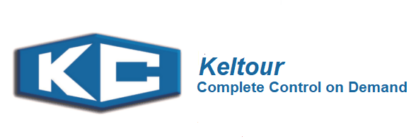Turnkey Solution
What are control panels used for?
A control panel is an enclosure that contains the electronics and electrical components needed to operate electrical devices, or devices in a planned sequence. A power section, a control section (such as a PLC), input/output devices, and display are standard components of a control panel. It serves as a single point of oversight and control for a process or a machine. Control panels are used in many various applications, including industrial automation, construction monitoring systems, and home automation.
A control panel’s design and build can vary significantly based on the specific demands of the application; however, they are usually composed to be durable to endure the extreme conditions commonly encountered in industrial environments. They are also intended to be simple to install and maintain, with straightforward and precise labeling to aid in the identification of elements and circuitry.
So, what exactly are control panels used for? We’re diving further into control panels in more detail throughout this article. As such, for more information, keep reading!

FAQ
What is the purpose of control panels?
Control panels are designed to provide a single point of access for managing and controlling a device, devices or process. They are employed to automate and streamline. System operation allows users to supervise and control the operation more efficiently. They provide a simple interface for the user to regulate the machine or process, and they can be encoded to automate processes, including machine start-up and shut-down sequence data, temperature regulation, and illumination. Ultimately, by providing centralized management and coordination, lowering the need for human input, and deterring operator errors, control panels can assist in increasing the efficiency, consistency, and safety of a system.
What goes in a control panel?
Furthermore, the specific elements that make up a control panel will largely depend on the application’s particular requirements. Additional materials, such as network systems, signal conditioning devices, or alarm systems, may be included in some control panels. The components are selected and designed to meet the requirements of the application while also making sure that the control panel is dependable, efficient, and simple to maintain. Regardless, here is a closer look at what exactly goes in a control panel so it can function:
· Enclosures: An enclosure is the physical structure of an electrical control panel. It contains the parts and serves as a buffer between dangers enclosed within and people who are outside of the enclosure. Enclosure types will vary depending on the environment they are installed in.
· Main circuit breaker: It serves as a link between both the inbound power cable and the electrical control panel. It is a mechanical device that enables a user to connect or disconnect the power line from the electrical control panel or power system. The main circuit breaker’s use or application varies depending on the kind of circuit breaker used, but it typically serves as an intermediary to preserve the electric panel system from power cable short circuits by instantly disconnecting the process.
· Surge arresters: This element inhibits overvoltage from harming the electronic connections within the panel caused by lightning or utility power surges.
· Transformers: Transformers may step up or down the incoming power to multiple voltages as required
· Terminal blocks: These blocks aid in the organization and distribution of conductors from multiple sources to numerous electrical equipment.
· Programmable logic controller (PLC): Programmable logic controllers are the control panel’s brain, overseeing and controlling the different mechanical procedures. It will encompass numerous outputs and inputs to and from various equipment processes.
· Network switches: The control panel’s connectivity hub and network interface enable communication among the PLC and the numerous network-compatible equipment on the manufacturing line.
· Human-machine interface (HMI): These components enable a user to supervise or regulate specific machine features. Displays, buttons, toggles, and keypads are examples of typical HMIs.
· Relays and contactors: Relays are safety devices that link and disengage electrical equipment from power. It enables the user to control power ON and OFF while creating and splitting electric circuits.
What can cause a control panel to fail?
Moreover, while electrical control panels are built with extreme durability in mind, there are instances where the board can fail. Here is a more in-depth look at some of the causes of control panel failure in more detail:
· Electrical Overload: Overloading the electrical system can cause components to fail, such as the power supply or the control system.
· Component Failure: Individual components, such as input/output devices, displays, or wiring, can fail due to wear and tear, age or exposure to harsh environments.
· Power Surges: Power surges caused by lightning strikes, power outages, or other factors can damage components in the control panel.
· Improper Wiring: Incorrect wiring or loose connections can cause problems, such as short circuits, incorrect signals, or incorrect control of the machine or process.
· Software Malfunctions: Issues with the software, such as bugs, programming errors, or compatibility problems, can cause the control system to fail.
· Human Error: Operator errors, such as incorrect programming or incorrect use of the control panel, can cause problems and lead to failure.
· Environmental Factors: Exposure to harsh environments, such as temperature extremes, humidity, or exposure to corrosive substances, can cause components to fail.
Regular maintenance and inspection of the control panel can help to prevent many of these issues and extend the lifespan of the components. In the event of a failure, it is essential to diagnose and repair the problem promptly, to prevent further damage and minimize downtime.
How long does a control panel last?
A control panel’s lifespan is determined by a number of variables, such as the durability of the parts utilized, the climate where the panel is used, and the amount of inspection and maintenance conducted. A control panel can last for 20 years or more under optimal circumstances, with high-quality parts, appropriate care, and installation in a secure setting. However, if elements are subjected to extreme conditions such as extreme temperatures, moisture, or toxic materials, or if the panel is subjected to frequent voltage spikes or electronic surges, the life expectancy of the panel could be diminished.
In general, routine servicing and safety checks of the control panel, such as inspecting for connectivity issues, validating proper component operation, and resolving any problems as they arise, can assist in extending the control panel’s lifespan and reducing the likelihood of malfunction.
When should a panel be replaced?
Lastly, below are some conditions that may be present and should be considered when determining panel replacement :
· Age: If the panel is outdated and has reached the end of its lifespan, it should be replaced. The average lifespan of a panel is 20-30 years, although this can vary based on the quality and availability of the components, also the environment in which it is used.
· Rust and corrosion: If the panel shows signs of rust or corrosion, it should be replaced, as this can indicate a potential safety hazard and reduced efficiency.
· Frequent tripping of breakers or blown fuses: If breakers or fuses are frequently tripping, it can indicate an overloaded electrical system, and the panel should be evaluated and potentially replaced.
· Voltage irregularities: If there are fluctuations in voltage, it can indicate problems with the panel, and the panel should be evaluated and potentially replaced.
· Overloading: If the panel is consistently overloaded, it should be evaluated and potentially replaced with a panel that can accommodate the additional load.
· Old or outdated components: If the panel contains old or obsolete components, such as fuses instead of circuit breakers or outdated power supplies, it should be evaluated and potentially replaced.
· Physical damage: If the panel has been damaged, such as from a fire or flood, it should be replaced, as this can indicate a potential safety hazard and reduced efficiency.
